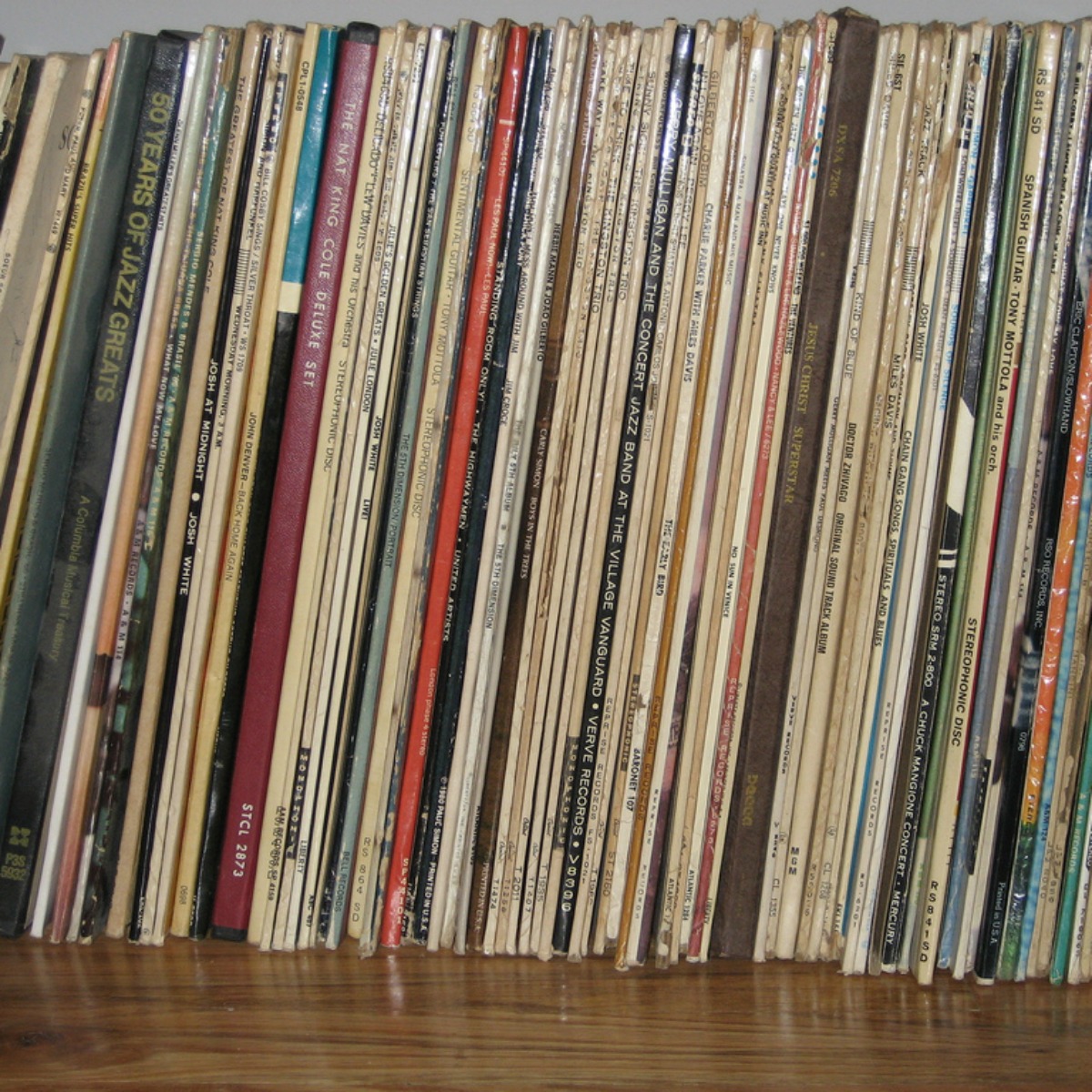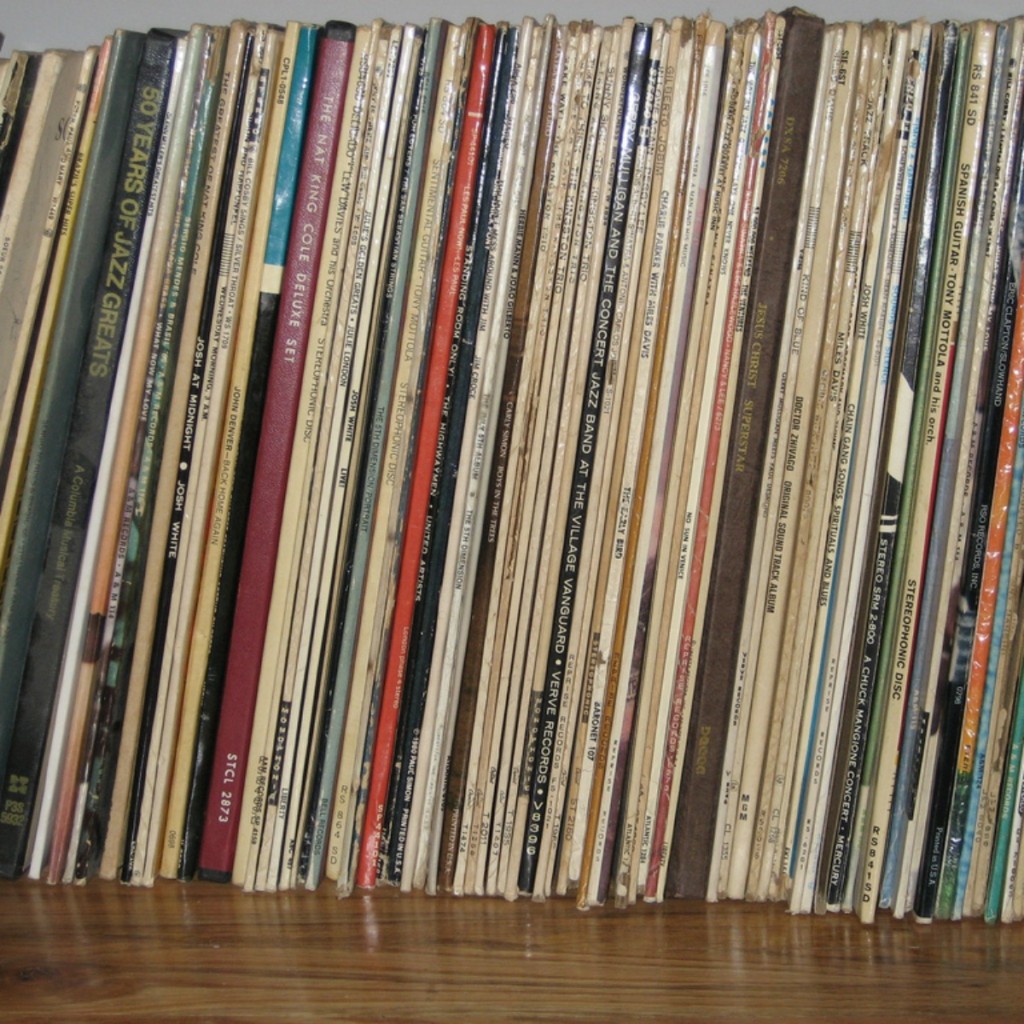ONLY NOISE: Pop Of The Tops: Extended Remix

With Father’s Day around the corner, Madison Bloom revisits her dad’s record collection. A version of this article originally appeared on the site in 2013.
My dad has more records than your dad. Roughly 4,000 of them. And as the former owner of a record shop located in Eastern Washington, he used to have many more to his name. The Chelan-based shop was only his for a few years in the late 1970s, and it was aptly titled: The Music Store.” Among other fads, like men shopping in the women’s section to find the coolest threads, my dad also predicted titular minimalism before it hit the mainstream. Or perhaps the moniker was a nod to the simplicity found in his favorite band’s name: The Band.
Dad used to stock The Music Store with stacks of pop/rock, country, bluegrass, jazz, folk, blues, and countless sub-genres. A large portion of his inventory was accumulated secondhand, as he would peruse thrift stores for rare finds as well as record discount sections, then known as cutout bins due to the rectangular chunk punched out of the LP’s sleeve. He’d buy milk crates full of albums for a few bucks.
To this day the cutout bin records are my dad’s scapegoat of choice when defending ownership of such releases as A Flock Of Seagulls’ 1986 release Dream Come True, and a surprisingly large body of the Huey Lewis and the News discography. “Must have been a cutout bin!” he always says. Yet the crates and bins were also responsible for some of the most strange and obscure gems. Take for instance my dad’s album of whale songs, narrated by none other than the late and great Leonard Nimoy. Or perhaps Ambrosia’s 1982 release Road Island, which, although sonically terrible, boasts a Ralph Steadman illustration on the cover. He also has an original pressing of A Tribute To Uncle Ray, an album released by (Little) Stevie Wonder at age 11, in which Wonder performs the songs of Ray Charles in his signature, sugar-sweet voice.
Giving the milk crate hauls and cutout bins all the credit would be unfair. The truth is the majority of my dad’s collection, in all of its diverse excellence, is due to his shameless, unrelenting love of music. It’s the reason he has everything from Todd Rundgren’s Runt to Marlene Dietrich Returns to Germany, an album of the starlet singing in her native tongue over Burt Bacharach’s orchestra. It’s the reason he has Tom Waits’ first seven albums, and T-Bone Burnett’s first two. He owns every record Harry Nilsson released, and as much of The Kinks’ output he could locate. He has an unopened copy of an interview with The Beatles, which could probably pay a few bills here and there if he could part with it, as well as a sealed collection of speeches from the 1934 Olympics, featuring monologues by American gold medalist Jesse Owens, and Axis leader Adolf Hitler.
As lucky as I feel to have this massive archive essentially at my fingertips, I have earned the access. In the span of ten years my dad and I moved that hulking collection five times. With each move the records would be put in orderly boxes, keeping their alphabetical ranks and genre-specific confines. A box for Christmas LPs, a few for country, soundtracks, jazz, etc. The collection was always the first thing I wanted to unpack, as our new house never felt like a home without that tower of vinyl watching over.
I realize that these are niche bragging rights, especially for someone born after the invention of the CD, such as myself. It is true that I’ve been surrounded by more iPods than turntables throughout my life. But the objects of our childhood fascination rarely lose potency over time. Mine just happened to have an “adult” application as well as a visceral one. Records, you see, were as good as my baby blanket. More than that, they were road signs for me all the way through adolescence, and they’re still guiding my infatuation with music today. In the same way I fervently rummage through my mother’s closet each year and find something previously overlooked, I spend hours in front of my dad’s massive library of albums during the holidays, eyeing each spine for a hidden pearl. Unfortunately, our steady rotation of house cats over the years has left most of the spines illegible and shedding their own skin.
Shamed as I am to say it, I have spent the majority of my eight years in New York sans turntable, and therefore have not allowed myself the indulgence of purchasing any vinyl for over six and a half years. Then, one birthday I was gifted a flimsy little dollhouse of a record player; a 1980s suitcase model by Vestax that I refer to as “Fischer Price My First Turntable.” It’s no collector’s item, but it does the trick. Ever since then I’ve allowed myself the occasional purchase-an occasional purchase which has swiftly escalated to weekly purchases, a subscription to a monthly vinyl club, and the slow but steady transplantation of my original collection in Washington to my growing one in Brooklyn.
One time, while selecting some records to take back to New York from the small corner my collection occupies in my dad’s shelving unit, I noticed something amiss. Dad had filed a handful of-go figure-my favorite albums in with his behemoth pop/rock section. As I started plucking my copy of Wire’s And Here It Is Again…Wire from the W’s he caught me. This immediately spawned an argument about whether the album was in fact mine, gifted to me by my mother, or his from before they were married-a promo copy from the Music Store days. I was tempted to challenge pops to name five Wire songs as proof that he even liked them, but instead simply pleaded, saying it was one of my favorite records of all time. This ended up being far more effective.
When my parents separated 18 years ago the retrieval of records was a painful order of business. Was that copy of The Pretenders’ first LP mom’s or dad’s? What about The Specials, or Hunky Dory? These disputes still surface, but I like to look on the bright side, which bears a simple fact: my parents have amazing taste in music. What if they were bickering about who ended up with the Kenny G record? Things could be worse.
He may not own a record store, or play in a country rock band, or wear navy suede cowboy shirts anymore, but my father has reintegrated music into his life in a whole new way. He never stopped writing music, or listening to music, or loving music, but now he nurtures the music of others in the restaurant-cum-club he owns with his wife. It has become a welcoming home to many Northwestern artists in its two years as a Bloom establishment. The bistro is just one more facet, one more excuse to talk about music, which we do more than anything, sending each other songs via email and watching the ever-impressive musical career of my older sister.
Recently I asked him what some of his most prized records are.
“Wow, that’s kind of a tough one,” he texted, responding almost immediately after with “of course my Harry Nilsson collection would come to mind. I also think my Mills Brothers collection and my collection of Django Reinhardt and Stéphane Grappelli are treasures.” The former two were easy guesses, and yet I had no idea he even had Django Reinhardt or Grappelli on wax. I suppose that is the constant allure of his collection.
A few months ago, my dad and I were on the phone, and I expressed to him a conundrum I often find myself in while record shopping. “It’s like, I want to own Astral Weeks on vinyl, but I’d feel stupid buying it,” I said. “Because you already have it, and then someday I will inherit all of your records, and then I will have two copies of Astral Weeks.”
“They will all be yours soon enough,” he replied, sounding oddly resolved.
“Hey!” I barked. “Don’t talk like that! Jesus. I’ll just buy a copy!”
“Oh, no I don’t mean that,” he laughed. “I mean when Sharon and I pick up and move to France one day. I don’t want to move all that shit again.”


